As preppers, we’re taught to think ahead, stock up, and be ready for anything. But what if I told you that some of the “must-have” long-lasting foods cluttering your pantry might be doing you more harm than good?
In the prepping world, misinformation is rampant, and what started as good advice has snowballed into a handful of myths we all believe. It’s time to shake off the influence of these myths and get real about what’s worth storing and what needs to go. Let’s explore some long-lasting foods that you should probably stop stockpiling—and consider what might serve you better in a real-life crisis.
Canned Fruit
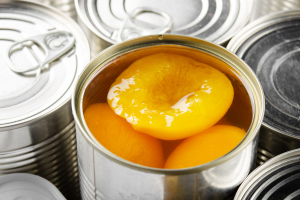 On the surface, canned fruit seems like a good idea. It’s sweet, has a decent shelf life, and can provide that touch of flavor that boosts morale.
On the surface, canned fruit seems like a good idea. It’s sweet, has a decent shelf life, and can provide that touch of flavor that boosts morale.
But here’s the reality: canned fruit is often packed in sugary syrup, offering limited nutritional value and a load of empty calories.
Plus, once a can is opened, the contents need to be consumed within days—not ideal when resources are tight and refrigeration is limited. Before you move on with the article, I have to tell you about my recent discovery: the #1 food you should stockpile for a long-term blackout. This is what will help you guarantee years of long-lasting and nutritious food for your family in any crisis.
White Rice
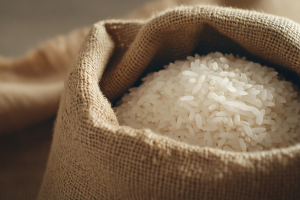 White rice has long been a staple of prepper pantries, but it’s not always the superstar it’s made out to be. Sure, it’s cheap and has an impressive shelf life, but let’s talk about its nutritional content—or lack thereof. White rice is essentially a belly filler, devoid of fiber, vitamins, and other critical nutrients.
White rice has long been a staple of prepper pantries, but it’s not always the superstar it’s made out to be. Sure, it’s cheap and has an impressive shelf life, but let’s talk about its nutritional content—or lack thereof. White rice is essentially a belly filler, devoid of fiber, vitamins, and other critical nutrients.
Eating it consistently can lead to nutritional deficiencies, particularly if fresh foods are in short supply.
Instead, stock up on alternatives like quinoa or wild rice. Quinoa is a complete protein source, which is incredibly important in a survival situation. It also contains fiber, vitamins, and minerals, making it a much more well-rounded food. Wild rice has a superior nutrient profile, offering more protein, vitamins, and antioxidants.
For the best way to make a reliable stockpile, I rely on this guide, which is not just about food storage—it’s about protecting your home and your stockpile, keeping your family safe, and staying resilient no matter what. This guide will walk you through everything from securing your space to gathering essential supplies, giving you the practical know-how to weather any crisis with confidence.
Powdered Milk
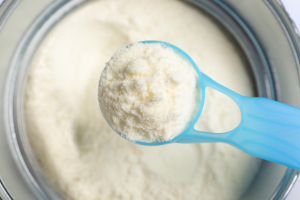 Powdered milk has made its way into many prepping lists as an alternative to fresh milk, but it’s time we address the elephant in the room: taste and practicality. In a crisis, powdered milk is notorious for its unpleasant flavor, which means that in a pinch, you’re likely to avoid using it.
Powdered milk has made its way into many prepping lists as an alternative to fresh milk, but it’s time we address the elephant in the room: taste and practicality. In a crisis, powdered milk is notorious for its unpleasant flavor, which means that in a pinch, you’re likely to avoid using it.
Plus, once reconstituted, it spoils quickly and requires precious clean water to mix.
Instead, consider storing canned coconut milk or almond milk in shelf-stable cartons. These options offer a longer shelf life, have added nutritional benefits, and most people find them more palatable. Plus, these can work in a variety of recipes beyond just a milk substitute, such as soups and curries, which makes them more versatile.
Saltine Crackers
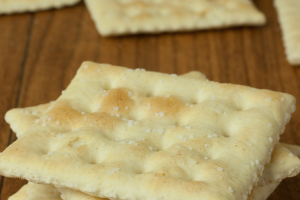 Saltine crackers are often touted as a convenient, long-lasting food source. But in reality, they are bulky, have a relatively short shelf life compared to other items, and are prone to going stale—even when stored properly. They also offer very little in terms of real sustenance, being mostly composed of refined flour and salt. You can find some good long-lasting alternatives from the Amish people here. Plus a ton of great canning tips and tricks from those who will not notice if a crisis were to take place.
Saltine crackers are often touted as a convenient, long-lasting food source. But in reality, they are bulky, have a relatively short shelf life compared to other items, and are prone to going stale—even when stored properly. They also offer very little in terms of real sustenance, being mostly composed of refined flour and salt. You can find some good long-lasting alternatives from the Amish people here. Plus a ton of great canning tips and tricks from those who will not notice if a crisis were to take place.
Instead, consider hardtack or pilot bread. These traditional long-lasting foods have stood the test of time, providing more calorie density and an infinitely longer shelf life. Hardtack is incredibly durable and, while not the tastiest option, it can last for years without any special storage conditions, making it much more practical in an emergency.
Instant Oatmeal Packets
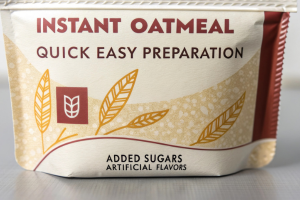 Instant oatmeal packets may seem convenient, but they’re more trouble than they’re worth. They are loaded with sugar and preservatives, and often, the portion sizes are small, leaving you hungry for more. They also require clean water for preparation, which may not be readily available.
Instant oatmeal packets may seem convenient, but they’re more trouble than they’re worth. They are loaded with sugar and preservatives, and often, the portion sizes are small, leaving you hungry for more. They also require clean water for preparation, which may not be readily available.
Consider instead storing rolled oats or steel-cut oats. They may take a bit longer to prepare, but they have a much longer shelf life, aren’t packed with unnecessary additives, and provide a hearty, nutritious meal. They also come in larger, more economical quantities, which helps stretch your food supply further.
Canned Soups
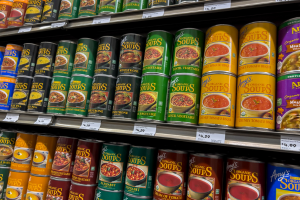 The idea of having a ready-made meal is enticing, which is why many preppers stockpile canned soups. But the reality is that canned soups are often high in sodium, low in calories, and bulky. They take up a significant amount of storage space, and the liquid inside adds unnecessary weight and volume.
The idea of having a ready-made meal is enticing, which is why many preppers stockpile canned soups. But the reality is that canned soups are often high in sodium, low in calories, and bulky. They take up a significant amount of storage space, and the liquid inside adds unnecessary weight and volume.
Instead, consider stocking up on soup-based powders and dehydrated vegetables. These options take up less space, weigh significantly less, and can be easily adjusted to suit your calorie needs without overwhelming you with sodium. Plus, powdered soup bases and dried veggies are more versatile, allowing you to create a wider range of meals, which will be a morale booster in tough times. Or you can try this perpetual soup that pioneers survived on and that’s very easy to make.
Honey in Large Containers
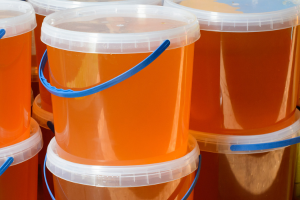 Yes, honey lasts forever. But does that mean you should be stocking it in giant five-gallon buckets? Absolutely not. Honey in large quantities is heavy, hard to manage, and prone to crystallizing, which can be a major inconvenience if you don’t have the means to properly warm it back up.
Yes, honey lasts forever. But does that mean you should be stocking it in giant five-gallon buckets? Absolutely not. Honey in large quantities is heavy, hard to manage, and prone to crystallizing, which can be a major inconvenience if you don’t have the means to properly warm it back up.
Moreover, while honey is a great sweetener, it doesn’t provide substantial nutritional value.
Instead, stock smaller jars of honey or consider alternatives like maple syrup in manageable quantities. These options are easier to store, and you won’t have to worry about spoiling a huge stash just because you can’t manage it properly. You should also know that you can make a potent natural remedy with honey that will prove very efficient in a medical crisis. You’ll find the complete recipe here.
Hard Candy
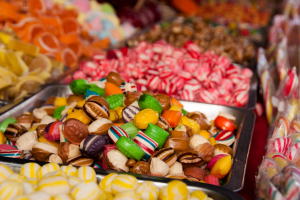 Hard candy is often suggested as a “comfort food” for morale. But when it comes down to it, hard candy is bulky, offers zero nutritional value, and contributes nothing but sugar.
Hard candy is often suggested as a “comfort food” for morale. But when it comes down to it, hard candy is bulky, offers zero nutritional value, and contributes nothing but sugar.
You’d be better off storing something that has more practical benefits.
Related: How to Dry Can Beans and Rice for 20+ Years Shelf Life
Instead of hard candy, consider stocking dried fruit or even dark chocolate. Both can provide a needed energy boost along with some vitamins and minerals. Dark chocolate, in particular, is high in antioxidants and can provide a much-needed mental lift when times are tough—all without taking up too much space.
Cornstarch
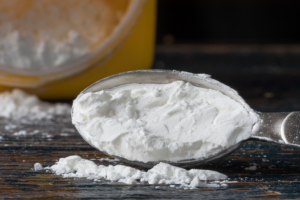 Cornstarch might sound like a good thickening agent to have on hand, but it really doesn’t contribute anything else to your diet. It’s bulky, and let’s face it—how often do you really need a thickening agent in a survival scenario?
Cornstarch might sound like a good thickening agent to have on hand, but it really doesn’t contribute anything else to your diet. It’s bulky, and let’s face it—how often do you really need a thickening agent in a survival scenario?
It’s more likely to end up being dead weight in your pantry.
Instead, opt for flour or powdered eggs. Flour serves multiple purposes—from baking to thickening—and powdered eggs offer a protein boost in addition to their versatility in cooking. Both provide far more utility and nutritional value in a survival context.
Canned Pasta Meals
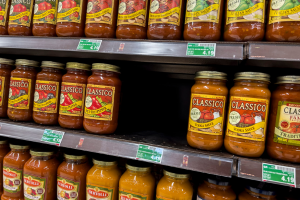 Canned pasta meals are a prepping favorite, but they come with their own set of issues.
Canned pasta meals are a prepping favorite, but they come with their own set of issues.
They’re high in sodium and low in nutritional value, and the portion sizes are often meager, especially when you consider how much space these cans take up in your pantry.
The heavy cans and low-calorie payoff just don’t make sense in a real prepping scenario.
⇒ What Happens If You Burn Noodles? (Video)
Instead, store dry pasta and shelf-stable tomato sauce. Dry pasta takes up far less space, can be portioned more effectively, and lasts for years. Tomato sauce in jars or packets is easy to store and offers more flexibility, allowing you to create various meals with your other stockpiled ingredients.
Final Thoughts
It’s time we take a hard look at what’s truly worth our time, money, and precious storage space. The prepping community is filled with good intentions, but sometimes we get caught up in trends that aren’t as practical as they seem. By ditching these overrated long-lasting foods and replacing them with alternatives that provide better nutrition, efficiency, and versatility, you’ll be better prepared for the real challenges that come your way.
For those looking to ensure their food supply in any situation, I highly recommend checking out The Lost Superfoods. This comprehensive guide provides invaluable information on over 126 survival foods that can be preserved and stored without refrigeration for years.
It’s a great resource to help you build a stockpile of nutritious, long-lasting foods, giving you peace of mind when SHTF. Prepare now and ensure your family’s sustenance no matter what happens.
Remember: space is precious, and every item in your stockpile should earn its keep. Focus on foods that are versatile, nutrient-dense, and practical for real-life survival. Don’t let yourself get caught in the trap of overstocking useless bulk—think smart, store smart, and stay prepared.
You may also like:
The Only Food That Grows Almost Faster Than You Can Eat It (Video)
Items People Would Kill for in a Crisis

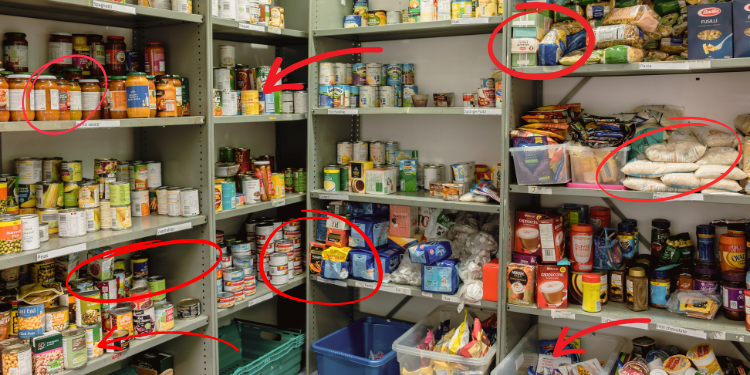
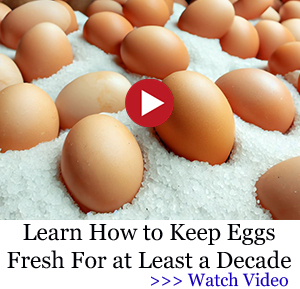



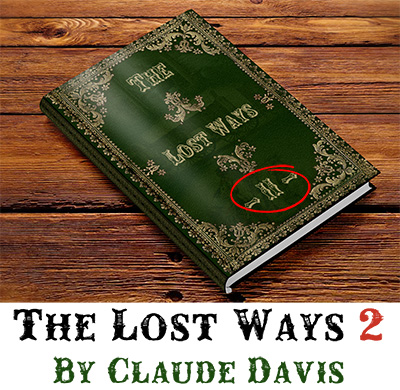
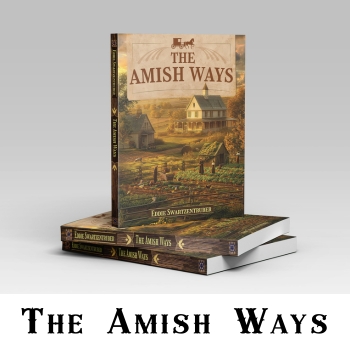

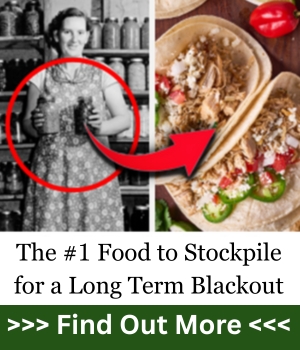






i agree with most of this article but the author commented several times about no nutritional value in certain foods, we have 2 grandkids who live with us and sometimes a sweet treat is just what we all need. you said to not use instant oatmeal because it takes precious water to make it. you said to use rolled oats instead but doesn’t these use water to prepare? i’m a little confused(nothing new there). a few years ago hy-vee grocery syore had mac&cheese on sale for .05 a box. i bought 5.00 worth (100 boxes) and opened the boxes and combined 2 boxes into vacuum bags. then put the bags into 2 five gallon buckets and vacuumed sealed the buckets with o2 obsorbers and dessicant in each bucket. they’re still good. i wish they’d run that sale again. i’ll quit rambling and wish everyone a good day.
Overall, good article. Conflicted information: oatmeal and powdered milk require precious water, powdered soup doesn’t?
A number of companies make shelf stable whole, 2% and skim milk. The “best by” dates are usually 9 months or so after purchase but I have found the whole milk lasts at least another year beyond that through trial and error. And even then I have yet to open a carton that has gone bad its just as far as I have checked currently. I keep about a dozen cartons stored in the basement or in my 2nd fridge even though refrigerating is not necessary. LALA is the brand I normally find but there are others such as Horizon and Parmalet. (Not sure of that spelling). I have only fond them in quart and pint containers. I cannot taste any difference in taste between shelf stable and regular milk. Powdered milk basically sucks as far as I’m concerned as far as drinking but might work in cooking though I’ve never tried it like that.
Howdy from natures swamp,
Corn starch works great on heat rashes. People who wear bullet proof vests or get a welding bb on their chest rub this on. Corn starch has more than one use. If you have ever been out and not had processed sugars, fructose and the other oseses.. and you get a couple bites worth usually some will have gastric issues in a short time. This is your body telling you don’t do that. If people want to help themselves now, limit processed sugar or dilute it. If shortages hit, foul weather kills a crop, any reason to not have sugars and you are intaking a lot? You will have issues. This is why many actual health advocates are calling for processed sugars and the frucose/ose sugars to be reclassified as a drug. You are only doing yourself a favor by limiting your intake now. If there is no reason to bug in or out, you are still doing yourself a favor.
I find myself in strange territory. Never in my life have I cheered on a Kennedy. Now it’s very strange for me to say, you go Junior and do a good work. My grands have food dye and additive reactions. Their strict diet far before Kennedy was confirmed wasn’t oh my! It was, he is right about obesity, poor health and food. Do yourself a favor and start habits changing now.
In reply to the oatmeal, it isn’t all it’s cracked up to be. It’s cheap. That’s why it is said to be healthy when it really isn’t. I definitely do not store it or take up space with it. If you want long shelf life and nutrition learn to dehydrate eggs. I have 24 eggs in a pint jar. There are far more ways and foods much better than oatmeal you can store long term.
Whole heartedly agree on RFK Jr. Not sure he can fight off the entrenched army of sugar and HFCS advocates but it’s worth an effort. Until parents wake up, the problem of chronic childhood disease will continue. Another subject: I keep about 20 chickens in a backyard flock. Last year, overloaded with eggs I decided to dehydrate. 30 dozen later I had a decent supply. Used an Excaliber 9 tray with silicone trays. 145 degrees for 16 hours, then back in the food processor for the final grind. I put them into either vacuum sealed pint jars or vac sealed bags with an O2 absorber. The bag fit nicely in the freezer and the jars in the fridge. Probably overkill but it got them out of the way. Each pint jar holds a dozen eggs. Don’t follow my technique, do your own research.
i wish i’d known about corn starch a few years ago. my wife at the time bought some avon talc for me to use under my bullet proof vest. it was scented and broke me out in a rash. longest 8 hour shift in my life. you’ve mentioned your from east texas, i was raised in port arthur,tx. i can relate to the swamps, we were 200 yds from the levee a, ,nd swamp on the other side. i’d like to know if the old house is still there after all the hurricanes, i live in missouri now in the ozarks.
Poot mentioned, that you mentioned being from East Texas? I recently moved back into East Texas (2 1/2 years ago) from a North Texas metromess… Could you possibly give me a general idea of what part of East Texas your in, nothing specific… I reside rurally pretty close to the middle… Always looking to connect with folks… I’ve been away from the Texas area for over 50yrs.. alot has changed, and a lot has not changed… I too would’ve liked to have known about the use of cornstarch for those of use who had to wear a vest daily…. I as well, learn probably just as much from the comments on here as I do reading the articles… I do read alot on this kind of subjects, mostly in the evenings, daylight time is spent doing chores on the property… TYA… PS, i would leave an email address, not sure if that is proper on this site…
I live in between Houston and Beaumont. Upper Galveston Bay is maybe a mile from me. My county is, The alligator capital of Texas.
Some of these items are appropriate for people who suffer from digestive disorders, nausea, or diabetes. The only item I could find that had as many pros as cons was canned pasta. All the other items had at least some good qualities.
Canned fruit, rice, instant oatmeal, saltines, canned soup, canned pasta, bulk honey, hard candy, and cornstarch all have their place in the survivalist’s food stores.
Do your own intensive research. Figure out what’s better for you and yours – and stock up.
Don’t throw it out , barter with it.
I eat a beautiful diet of fresh meats, fish, and vegetables prepared from scratch in my kitchen, low carb, low salt. My storage for SHTF long term is dried pinto beans, white rice, corn and delicious canned foods like Spam, Wolf Brand Chili, Vienna Sausage. The only thing that matters about survival food is calories, there are no ’empty calories’, that is a term for when we live in fat times. Look at the calories in your stored foods, it’s hard to get 2000 calories a day. A can of Spam, a can of beans, and a couple shots of vodka is the kind of meal a man needs, vitamins is for sissies.
Sounds like a recipe for causing CANCER over the long haul! And YES, Vitamins and MINERALS will save your life in a pinch!! Medicinal mushrooms will save your memory, too. You really need to do some research so you know what you’re talking about!
From a 20 year veteran of saving MANY lives with natural medicine and nutrition!! Also, know lots about Homeopathics and organic essential oils that can save you from influenzas (yes, even bird flu!) Marburg/ebola/bleeding influenzas, and a whole lot more!!
Dang, I said I eat a beautiful diet but we’re talking long term SHTF survival, meaning anybody who survives long enough to worry about cancer has won the lottery. Store calories and forage for nutrition. Here in North Texas it’s the middle of February but even after a couple of hard freezes I’ve got chives, garlic, oregano, and fennel sprouting in the kitchen garden. Farther out in the yard there’s a bumper crop of henbit and dandelion with docks and mustard coming on in a week or two. Gotta say, I haven’t had a respiratory virus in 40 years because I take Echinacea extract twice a week and have a big stand of E. angustifolia on my property for when I can no longer order it on Amazon.
Me too
Cornstarch has almost a many uses as Baking soda. Cornstarch is a bleach for laundry, lubricant for squeaking metal parts, added to sugar makes it last longer. Cornstarch & flour make a smoother pie crust and there are many others.
Generally, these articles are very good. This one is short-sighted. Adjusting the title and POV to “things to consider” or “pros/cons” of popular SHTF foods. A full, or non-empty stomach, allows better mental focus, and the brain is our first tool, line of defense, everything in every situation.
I very much like all of the comments. Thank you y’all. 🙂
I usually learn as much from the comment section as they do from the article. So yes, thank you everybody and it is a good article.
Though using precious water (as will most prep food items) … frankly, I love powdered milk. When the price goes up on milk at the store, or I have enough food stuffs at home, that I don’t feel like going to the store a second time this month to get milk … I pull out the powdered milk and use it for coffee, for milk in a recipe, for drinking … and never miss milk from the store in a jug. My opinion … but viable I think.
I have 5 children. I started keeping powdered milk in the house so I didn’t have to go shopping every few days for more milk. I used powdered milk for all my baking, hot chocolate, etc. Now that it is just the two of us I don’t use it as often (don’t go through the milk either). We weren’t drinking it as milk. If I really had to so long as it was milked well & chilled it was fine.
Everyone has their own tastes so store what you eat & eat what you store.
Debbie in MA
I have stored a 5 gallon bucket of a great , various selection of hard candies waaay up in the loft where I find it hard to raid . There is toothbrushes and tooth pastes in there too. I juss like the idea of handing a fellow survivor a handful of these and watching a smile come over their face. It is just one bucket of many food stuffs I have stashed.
A few years ago I had some honey in a jar that wasn’t sealed well and ants got into it. Because I didn’t want to eat honey covered ants, sadly, I had to throw them out.
As mentioned, each household must consider if an item is worthwhile to have in hand.
I think trying it out in one’s own household is the best way to see if a product be useful.
I keep powdered milk on hand. We have just one milk drinker in the house, who refuses to drink powdered milk, full stop. Yet, I’ve used powdered milk in cooking and baking with excellent results. Potato dishes are just as tasty whether I use fresh or powdered. I’ve used it in making pancakes, too.
It takes me quite a while to go through a container of powdered milk, but it has earned its place in the shelf.
I have a household member who likes flavored oatmeal. I prefer steel-cut oats, but will eat flavored if that’s all there is. In one storm, I was going to make up some oatmeal. I mixed plain oat flakes with the flavored oatmeal. Added powdered milk and water and cooked it. All of us enjoyed it. The added creaminess from the powdered milk made the less sweet flavor still palatable for the flavored oatmeal fan. Adding some dried fruits sweetened things up, too.
We have dehydrated fruits and vegs on hand. The fruits can be snacks as is or reconstituted to use as stewed fruit, cobbler (again with oats), and the dehydrated vegs can be added to soups or stews.
I agree that commercially canned soups are a lot of sodium and not super great, yet a few cans are on my shelves. I can use them as soup starter and add other things I have on hand to round them out. A bit of meat that might be one serving or less, some dried potatoes, or little bits and bobs of veggies mixed in along with some rice or farro can make it a more substantial meal and give a bit of salty liquid, allowing me to use less water. Also, if any noncooking members of the household need to cook, it gives them a starting point. Ideally, every member in the household can cook from scratch if it comes to it, but that’s often not the case in many households.
Can I can my own soups? Absolutely. And I prefer that, to be sure. But I typically keep about a half dozen ready-made commercial soups for those just in case times.
I looked at what kinds of food I’d want for my household, and how much food each person would need at a minimum, and based my pantry on that. SHTF foods are fine, but I also needed to consider if my household would actually want to eat those foods. We got some to try. The verdict is while they are okay in a pinch, they are not what we want for long-term daily eating. I can make my own with more palatable results.
We’ve had physical jobs and jobs where we worked outside most of the time. I noticed our appetites were different when that was the case, and we were less picky about the menu. Working outside in all weather, though, meant that when it was cold outside, we wanted warm food. In a SHTF situation where we might be doing a lot more outside, that tidbit is useful to know.
Once I made it a point to see what my household truly likes to eat and operates best eating (at times these are two different things), it helped me to put food on the shelves we are glad to eat.
When I was in the military, we used to crush ants and put them in our field rations. they added a slightly lemony zippy flavouring.
Corn starch can be used with baking soda and cream of tartar to make a substitute for baking powder, so keeping at least a small supply on hand seems reasonable, since baking powder loses potency over time.
Having eaten ants on 3 continents (a mission trip, a jungle trip, and to freak out a friend’s kids), that’s one insect I won’t usually throw food out for. Pantry moths and weevils… yeah, I’ve lost quite a bit of food to them. And they’ve been on the increase in the last several years.
While honey boasts an almost indefinite shelf life due to its low moisture and high sugar content, making it inhospitable to bacteria and fungi, stockpiling excessive amounts may be unnecessary. A moderate quantity can suffice for extended periods.